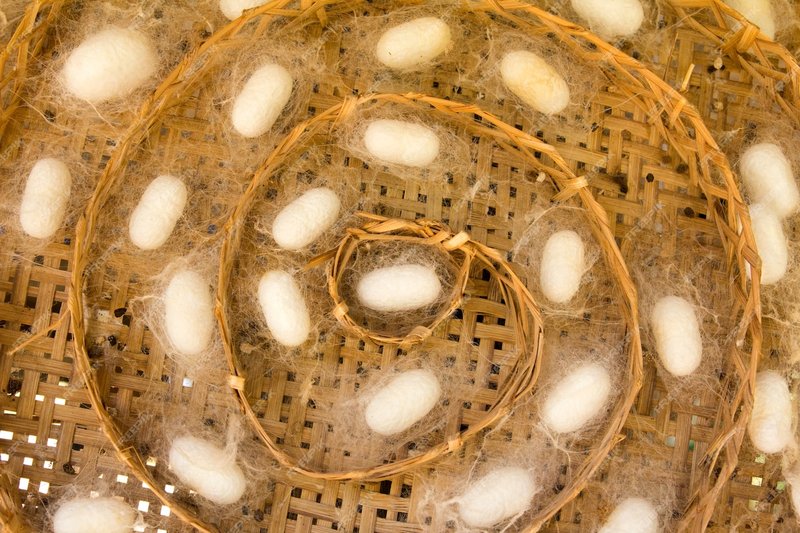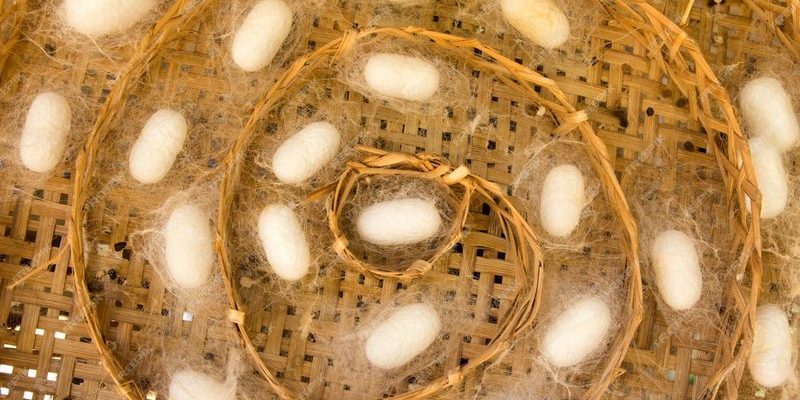
Imagine walking through an art gallery. You see sculptures, paintings, and mixed media pieces that all tell a story. Now, think of silkworm cocoons as the blank canvas or the building block of a beautiful creation waiting to happen. They’re like nature’s little art supply, just waiting for someone with a creative touch to transform them into something special. Today, let’s dive into how these quirky little cocoons can be incorporated into your next art or craft project.
Understanding Silkworm Cocoons
Silkworm cocoons are not just artistically appealing; they also carry a rich history. These cocoons are made by the larvae of the silkworm, primarily the species *Bombyx mori*. Once the larvae wrap themselves in silk, they create a protective casing—a cocoon—where they eventually transform into moths. The process starts with the larvae spinning silk around themselves, which can take up to several days. This silky sheath is what we often see in various art projects.
Cocoons are typically off-white or pale yellow, but they can be dyed in vibrant colors, making them even more versatile for crafting. The beauty of a silkworm cocoon lies in its organic texture, which adds depth and interest to any art piece. Think about how a simple, smooth paint surface contrasts sharply with the rough, fibrous texture of a cocoon—such contrasts can make your artwork truly pop.
It’s worth mentioning that while they are beautiful, silkworm cocoons are also sustainable. They can often be sourced from silk production waste, meaning you’re not only creating art but also supporting eco-friendly practices.
Craft Ideas Using Silkworm Cocoons
Now, let’s get those creative juices flowing! There are tons of ways to use silkworm cocoons in various craft projects. Here are just a few ideas to consider:
- Wall Art: Create a stunning wall hanging by arranging many cocoon shapes on a canvas. You can leave them natural or paint them in colors that match your décor.
- Jewelry: Silkworm cocoons can be transformed into unique pendants or earrings. Just drill a small hole, add a chain or hook, and you have a one-of-a-kind piece.
- Home Decor: Use cocoons in floral arrangements or as part of a centerpiece. Their delicate shape and texture can add an interesting element to any display.
Honestly, crafting with silkworm cocoons is about playing and experimenting. You don’t need to be a professional artist; just let your imagination guide you. Maybe you’ll find that a simple arrangement of cocoons can tell a story or convey an emotion that a brushstroke alone cannot.
How to Prepare Silkworm Cocoons for Crafting
Before you dive into your craft projects, you’ll want to prepare your silkworm cocoons properly. Here’s a simple step-by-step guide to get you started:
1. **Clean the Cocoons:** Rinse your cocoons gently in lukewarm water to remove any dirt or silk residue. Avoid hot water, as it can weaken the fibers.
2. **Dry Thoroughly:** Lay your cleaned cocoons on a towel and let them air dry completely. This is crucial to prevent any mold from developing.
3. **Dye (Optional):** If you want a splash of color, dye your cocoons using natural dyes or fabric dyes. Just follow the dye package instructions for the best results.
4. **Seal (Optional):** To protect the cocoons and add durability, consider applying a clear sealant after dyeing. This will help maintain the color and texture in your final piece.
Taking the extra steps to prepare your cocoons ensures that your final project looks polished and lasts over time. It’s a little bit of effort, but the payoff is worth it when you see your vision come to life.
Incorporating Silkworm Cocoons in Mixed Media Art
Mixed media art is all about combining different materials and techniques to create something new. Silkworm cocoons can be a fantastic addition to this style of art. You can pair them with paints, paper, fabric, and even natural elements like wood or stones to add dimension.
For instance, imagine a canvas covered in bright colors and textures, with silkworm cocoons strategically placed among painted flowers or abstract shapes. The natural fibers of the cocoons create an engaging contrast to the smooth paint. You might even consider attaching some with hot glue for stability, or sewing them directly onto your canvas for a more tactile experience.
You could also use cocoons to create 3D pieces. By stacking cocoon clusters or layering them with other materials, you can develop depth in your artwork that invites viewers to explore every angle. Just think of the storytelling potential here!
Common Mistakes to Avoid When Using Silkworm Cocoons
Like any crafting project, there can be pitfalls when working with silkworm cocoons. Here are a few common mistakes to watch out for:
- Neglecting Cleanup: As mentioned, you want to clean your cocoons before using them. Skipping this step can lead to unexpected issues, like discoloration or odor later.
- Avoiding Experimentation: Don’t shy away from testing different techniques. Trying out various adhesives, colors, or placements can lead to delightful surprises!
- Overcomplicating Designs: Sometimes, less is more. Silkworm cocoons have a beauty of their own. Don’t feel the need to over-decorate; let their simplicity shine.
Let’s be real: crafting is meant to be fun, so don’t stress too much if things go awry. Each mistake can lead to better understanding and, who knows, might inspire a new direction in your art!
Inspiration from Other Artists
Many artists are tapping into the beauty of silkworm cocoons to create stunning works of art. For example, look at the intricate designs of textile artists who incorporate cocoons into their fabric creations, blending tradition with modern aesthetics. You might also find sculptures that utilize cocoons to represent themes of transformation and rebirth—fitting, given their origins.
Don’t hesitate to explore online platforms like Pinterest or Instagram for inspiration. Search for terms like “silkworm cocoon art” or “mixed media cocoons,” and you’ll discover a wealth of ideas. Seeing what others have created can spark your creativity, showing you just how versatile these tiny treasures can be.
Closing Thoughts: The Art of Transformation
Working with silkworm cocoons in art and craft projects opens up a world of creative possibilities. These little wonders challenge us to think outside the box and use natural materials in ways we might not have considered before. Whether you’re crafting jewelry, wall art, or mixed media pieces, cocoons provide not only a unique texture but also a story behind each piece.
So, gather some cocoons, let your imagination roam free, and remember—it’s all about enjoying the process. Who knows what beautiful creations await you? Happy crafting!

